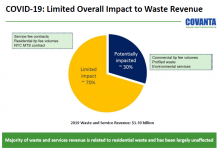By Jim Lane
Over the years we’ve all seen a lot of curveballs in the advanced bioeconomy. You see companies like Valero, which lobby the United States Congress with unbridled intensity to get rid of the Renewable Fuel Standard, on the verge of becoming the single-biggest producer of RINs in the United States (with news that they might take capacity at Diamond Green Diesel up to 540 million gallons).
You see companies like Solazyme which love the Renewable Fuel Standard and drive up to nearly a billion-dollar post-IPO valuation based on delivering fuels at volume, then announcing that there are even more exciting opportunities in nutrition and changing the name of the company to pursue that, only to sell themselves for $20 million to Corbion.
There are quite a number of examples of the Chutes and Ladders kind. Companies rise up, then inexplicably plunge. Companies that have plunged into total obscurity, finally put together the critical JV or first commercial financing. Everyone heading for Brazil, then no one heading for Brazil. Many fleeing California for Texas, citing high production costs. Then many pouring back into the California market, citing the high prices.
It’s been a decade of chutes and ladders, curves and slides and curveballs and a lot of slide decks. But lately there’s been a spate of curves offered up of the economic chart kind that offer some real insight into where the advanced bioeconomy might head next when it comes to early-stage venture opportunities and models.
First, some curves offered over the years that give you the necessary backgrounding.
The RFS Curve
Here’s what was expected. Falling biofuels costs and rising production would sustain a Renewable Fuel Standard that was rapidly expended in 2007.

The Price Curves
Here’s the basic one that drove the bioeconomy towards fuel production. A spate of curves suggesting a long-term oil price at or above $100.

But then there was this forecast in 2009, which hasn’t been all that far off when you think about it. What you might consider that happened is that the global petroleum market started out in 2009-2013 as if it were in the high or med-range scenario, but down-shifted to the low-end scenario around the beginning of 2015.

With expectations of $100 oil and an enhanced Renewable Fuel Standard passed in 2007, here’s the expectation that we saw in projection after projection of the volume in renewable fuels.
What actually happened was that the biomass-based diesel and corn ethanol sectors produced what was expected, more or less. The Cellulosic sector has fallen wildly short of expectations on volume — producing in the hundreds of millions rather than the billions of gallons.
In part, that was driven by the oil price scenario — the prospect of lower prices crushed investment in many technology developers and technologies starved.

Long before the oil price debacle, there was the natural gas price crash — and that was a fundamental reason that many investors stayed away from renewables. Cheap methane arrived in volume while cheap sugar did not. A number of bio-based players — especially those in gas fermentation — shifted focus from syngas fermentation based on biomass feedstocks to methane fermentation based on fossil fuels. They were counting on the delta between oil and natural gas prices to persist — providing markets with a cheaper route to fuels by using cheap methane as a feedstock instead of cheap petroleum.
But for bio-based technologies, oil prices hurt, a lot — but it was more than that. Those that did get out into the market struggled to meet expectations on deployment speed or production rate. Plants that were designed to produce 25 million gallons of fuel struggled to produce more than a small fraction of that, causing capex costs (on a per gallon basis) to soar beyond the point of project viability.
The Cost Curves
Here’s a slide typical of the early 2010s — biobased companies like Solazyme , Amyris (AMRS), Gevo (GEVO) and others expected to be driving very quickly down the cost curve, opening up more and more markets and moving from small specialty niches like advanced foods and nutraceuticals into specialty chemicals and then fuels.

The Innovation Curve
There’s been revived optimism of late, though, especially among those investing in earlier-stage renewable chemicals that the advanced bioeconomy has been passing through what is known as the Gartner Curve of innovation. Generically, that’s this: the idea that there’s a rush of enthusiasm over new technology that leads to a trough of disillusion and ultimately to a slope of enlightenment.
 A surge in unreasonable exuberance from 2008-2012 gave way starting in 2013-14 or so to the trough of disillusionment. Sofinnova Ventures managing partner Denis Luquin offered this slide a few years back, suggesting that the peak of inflated expectations came in December 2011 and that the trough of disillusionment was reached in 2015.
A surge in unreasonable exuberance from 2008-2012 gave way starting in 2013-14 or so to the trough of disillusionment. Sofinnova Ventures managing partner Denis Luquin offered this slide a few years back, suggesting that the peak of inflated expectations came in December 2011 and that the trough of disillusionment was reached in 2015.

At ABLC Next 2017, Luquin updated his slide to suggest that the Trough of Disillusionment has lasted far longer than expected, and has been reached in 2017.

But we’re not sure. We think that it might have been reached in 2015 or 2016 after all, following the realization that oil prices would not rebound and that the expected wave of cellulosic fuel technologies would not deliver anywhere near as fast as hoped. That crushed expansion hopes for fuels — which had the Renewable Fuel Standard to assure a market but lacked the investment drivers. Chemicals lack an assurance of market, so they’ve simply been crushed or delayed by persistently low oil and gas prices, excepting in selected cases where they can compete against tremendously complicated and expensive production processes from oil or gas (such as selected nutraceuticals and one-step organic acids), or where they offer functional advantages over traditional molecules (such as PEF’s functional advantages over PET as a clear plastic).
But there have been so many project announcements this year that it would be impossible to label 2017 as the Trough of Disillusionment’s low point. Even Valero, which rails against the Renewable Fuel Standard in DC, is tripling production with Darling (DAR) at their Diamond Green Diesel renewable diesel plant in Louisiana. We have LanzaTech deploying, Synvina under construction by BASF and Avantium, two projects underway with Clariant’s technology, Fulcrum’s first commercial under construction, Licella’s first project underway in Canada, Ensyn expanding fast, Neste considering expansion, Aemetis (AMTX) and LanzaTech deploying cellulosic at scale in California. Just to name a few.
That feels much more like the Slope of Enlightenment than the Trough of Disillusionment. So we think that the Gartner curve looks more like this.
But for early-stage investors, there remains the puzzle of how to make a successful market entry with a disruptive technology. It’s proven too tough to rely on fuels or chemical commodity markets and on the proposed rate of development and deployment. The markets have been priced too low and the technologies proceeding too slowly to offer the kind of rates of return that venture investors require.
So, where has our perfect storm left us?
Moving way, way, way up the value curve, that’s where.
Here’s a chart that looks like today. This is where Amyris’ investors are pointing that technology. Former Cobalt CEO Rick Wilson used to say, Why make a $3 fuel when you can make a $5 chemical,” and it was a good question at the time. But these investor’s aren’t looking any more for $900 per ton markets, not $1500 per ton markets — they’re leaving those to the strategics who need them or have the patient capital to weather the storms.
Why make a $3 fuel when you can make a $1744 nutraceutical?
Rather, they are looking for $10,000 per ton, even $100,000 per ton markets — or simply looking for service models which make money by selling, in many cases, to people chasing $10,000 per ton or $100,000 per ton markets.
It looks like pharma all over again, in many ways. If you think about active ingredient volumes in therapeutics and the price we pay for them, the opportunities are astronomical.
Only one difference. The investment group is looking to get as close as they can to pharma price points without incurring pharma’s ruinously long approval timelines or the narrow set of therapeutics that find big global markets.
Hence, nutraceuticals and advanced foods. People who will never pay more than $3 per gallon for algae fuels are more than happy to pay $25 at GNC for 45 grams of algae oil as a nutraceutical. That equates to $1,744 per US gallon, by volume — in case you wondered. Or $555,000 per metric ton.
Or, consider the burger. $17 is not unheard of for a quarter-pound Impossible Burger, and after subtracting perhaps a third for the other ingredients by weight, consider that a burger made with biotechnology checks in at a value of something like $845 per gallon equivalent (if we did equivalent weights), or $202,985 per ton. And the Impossible Burger is said to be gearing up to ship a million pounds a month right now.
The Super-High Value Expectation Curve
Yes, those are retail not wholesale rates — but consider the point. Venture investors aren’t looking necessarily for “higher-value markets”. They are looking for Super-High.
Only in those cases are they seeing that the timelines and risks associated with industrial fermentation scale-up are justified by the margins — and they sure like the commodity price swings of food more than they like commodity fuels and chemicals. Food is volatile, but not nearly as volatile as energy.
Larger markets — they make sense if there’s a strategic doing corporate venturing, and they want a venture investor to help them with early-stage technology risk.
Think of venture investors almost like accelerators these days — when it comes to commodity markets. Probably one of the reasons that Tech accelerators and venture investors are working so closely together. It’s no longer a question of investing from early-stage and going for the IPO when there is deployment at scale (i.e., the construction of the first commercial is underway). Markets are too leery of crashes like Amyris and Gevo.
Rather, in bulk commodity markets its about a hand-off through strategic acquisition to a partner or JV that can bear the costs and brings expertise to the scale-up.
Something like what we’ve seen with Virent, or REG Life Sciences (REGI), or lately with Corbion’s acquisition of TerraVia.
That model may well be the winner in terms of moving through the Slope of Enlightenment to the Peak of Productivity.
Jim Lane is editor and publisher of Biofuels Digest where this article was originally published. Biofuels Digest is the most widely read Biofuels daily read by 14,000+ organizations. Subscribe here.








